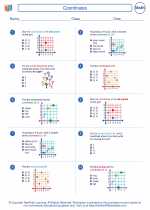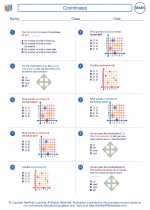Coordinates -> edges
Edges - Definition and Explanation
In geometry, an edge refers to a line segment where two faces of a solid figure meet. It is the intersection of two faces, and it is what gives a solid figure its shape. For example, a cube has 12 edges, as each of its six faces meets at two edges.
Types of Edges
There are two types of edges: visible edges and hidden edges.
- Visible Edges: These are the edges of a solid figure that are visible when looking at the figure from a certain angle. They are the edges that define the shape of the figure and are typically drawn in solid lines in geometric diagrams.
- Hidden Edges: These are the edges of a solid figure that are not visible when looking at the figure from a certain angle. They are often drawn using dashed or dotted lines in geometric diagrams to indicate that they are behind other parts of the figure.
Study Guide for Edges
Here are some key points to remember when studying edges in geometry:
- Identify the edges of different solid figures, such as cubes, rectangular prisms, pyramids, and cylinders.
- Understand the difference between visible edges and hidden edges and how they are represented in geometric diagrams.
- Practice counting the number of edges on various solid figures to reinforce your understanding.
- Use models or physical objects to visually see and count the edges of different shapes.
- Apply your knowledge of edges to real-world objects and situations, such as identifying the edges of a box or a book.
By understanding the concept of edges and practicing identifying and counting them on different solid figures, you will develop a strong foundation in geometry and spatial reasoning.
.◂Math Worksheets and Study Guides Fourth Grade. Coordinates
Study Guide Coordinates
Coordinates  Worksheet/Answer key
Worksheet/Answer key Coordinates
Coordinates  Worksheet/Answer key
Worksheet/Answer key Coordinates
Coordinates  Worksheet/Answer key
Worksheet/Answer key Coordinates
Coordinates 

 Worksheet/Answer key
Worksheet/Answer key
 Worksheet/Answer key
Worksheet/Answer key
 Worksheet/Answer key
Worksheet/Answer key

The resources above cover the following skills:
Geometry (NCTM)
Specify locations and describe spatial relationships using coordinate geometry and other representational systems.
Describe location and movement using common language and geometric vocabulary.
Make and use coordinate systems to specify locations and to describe paths.